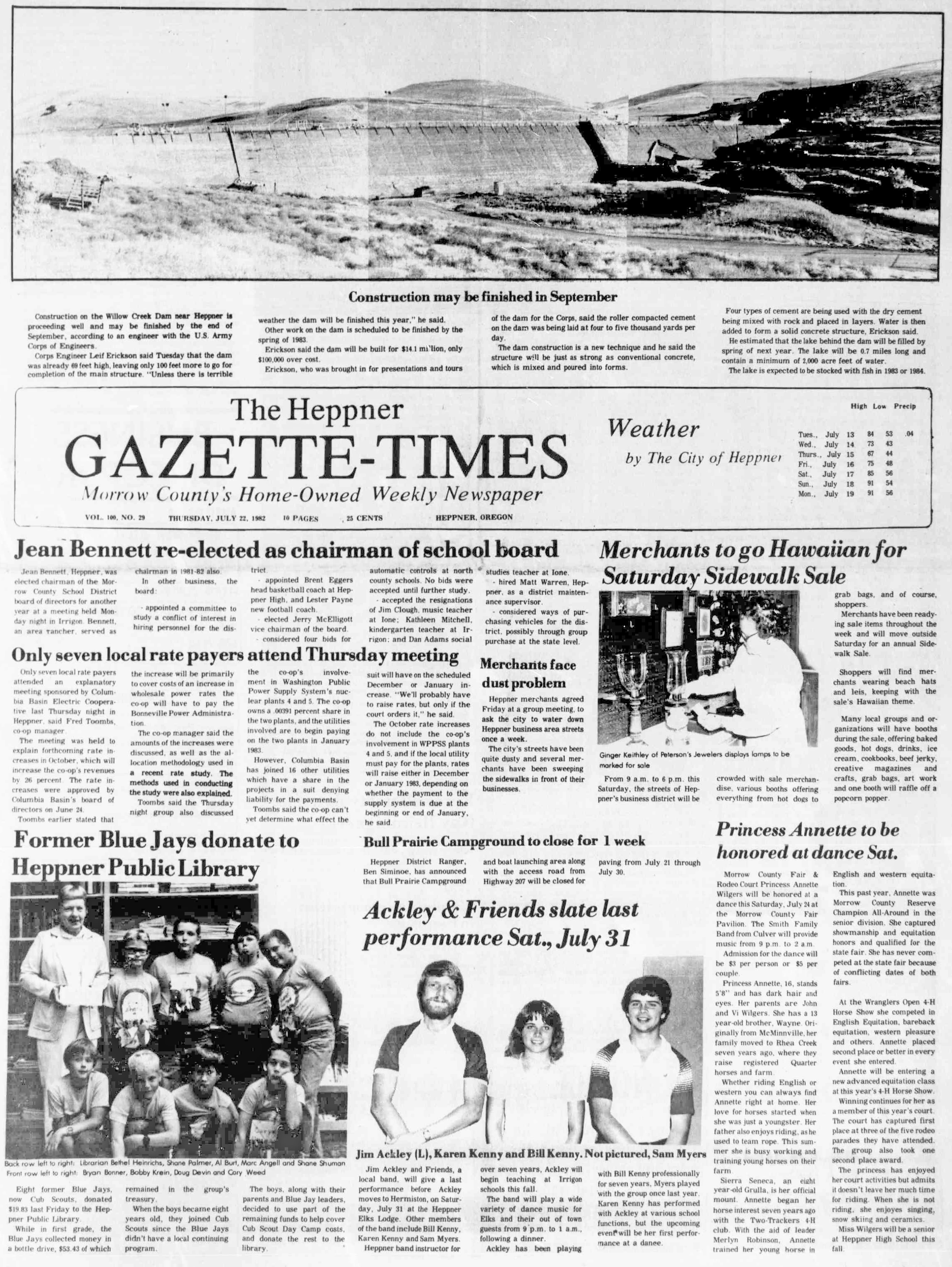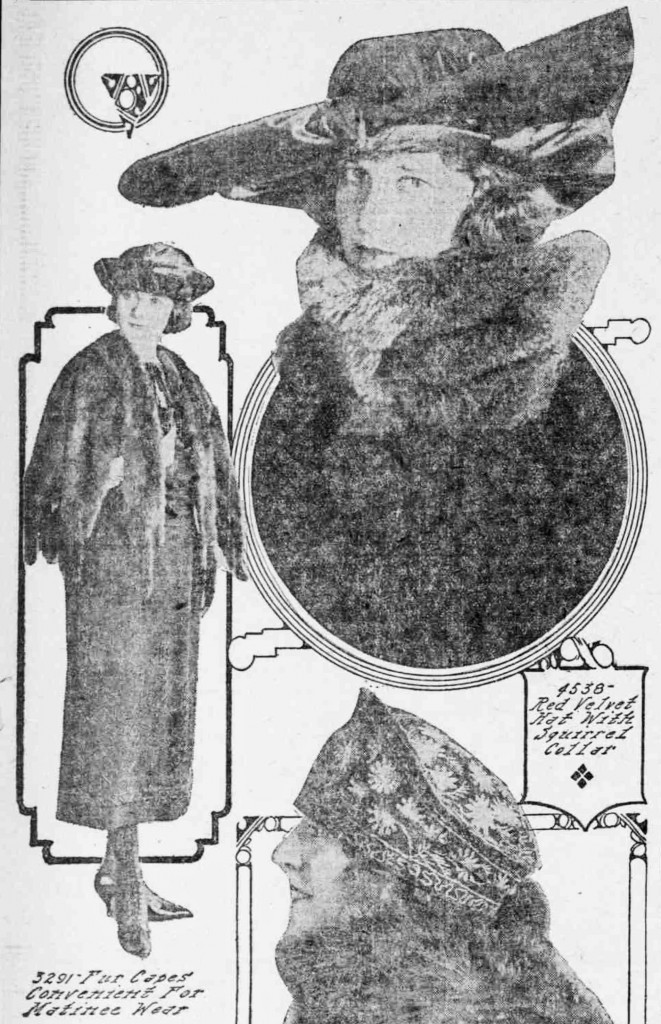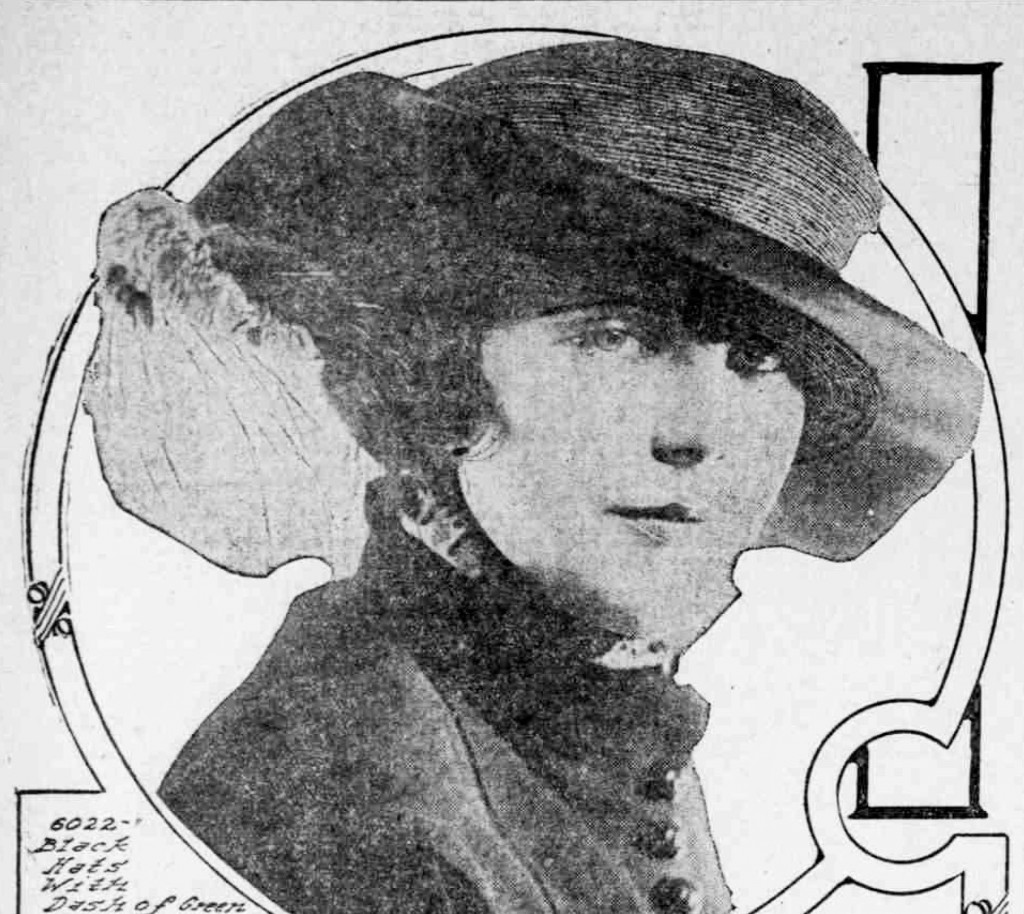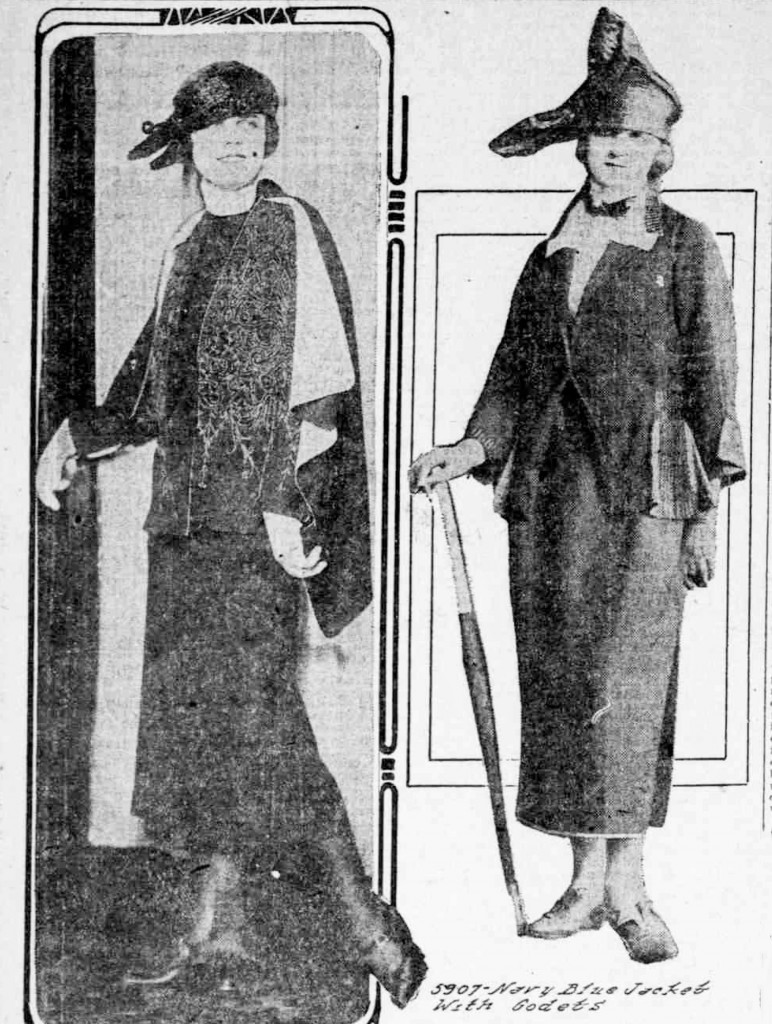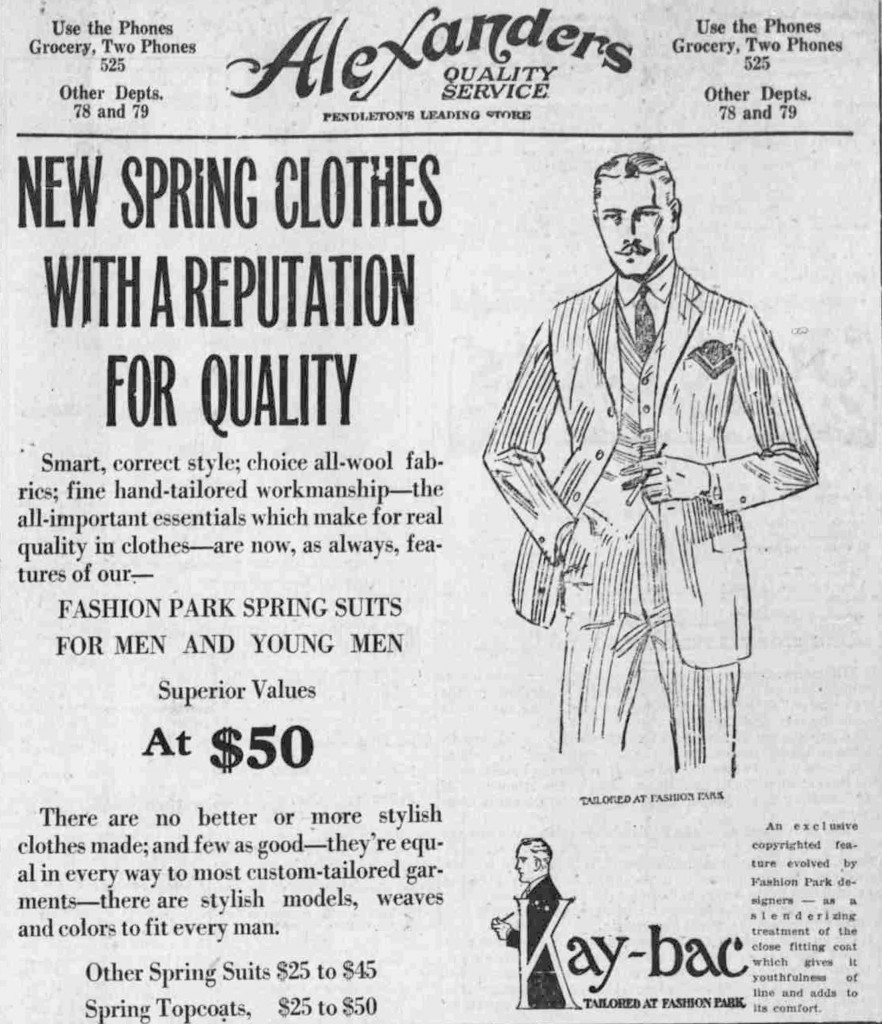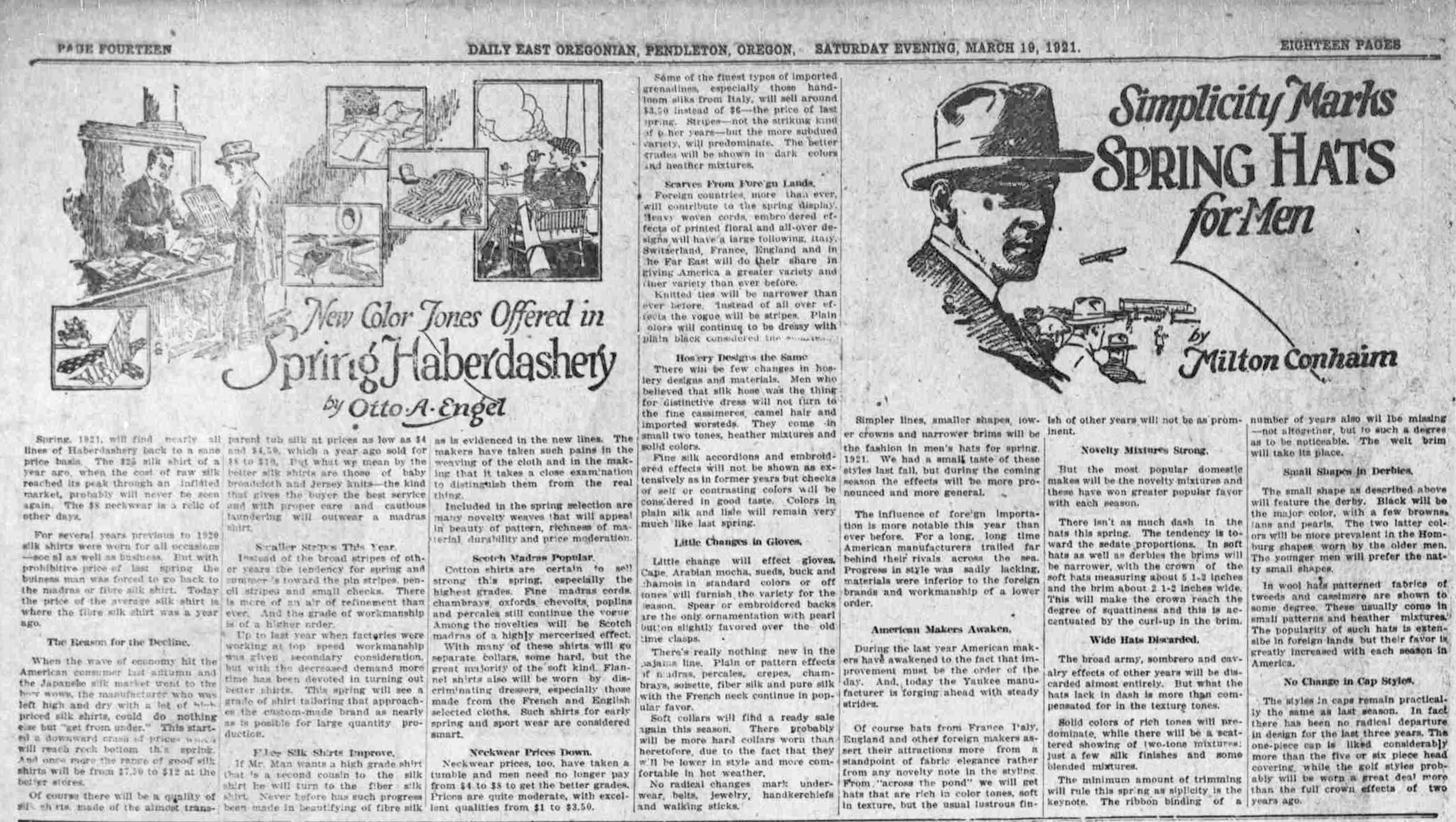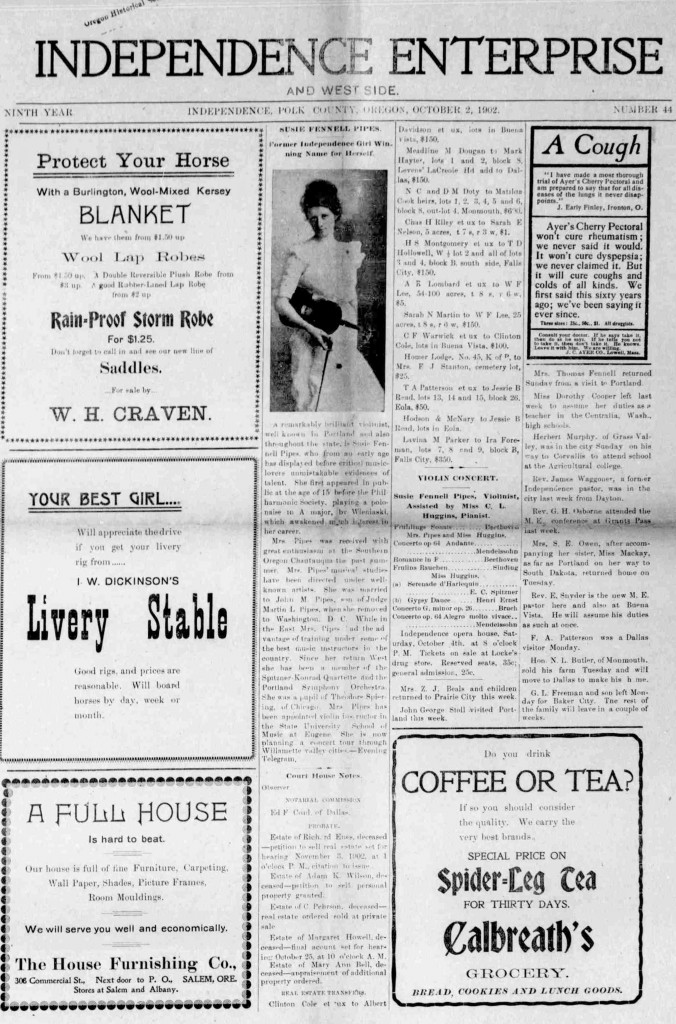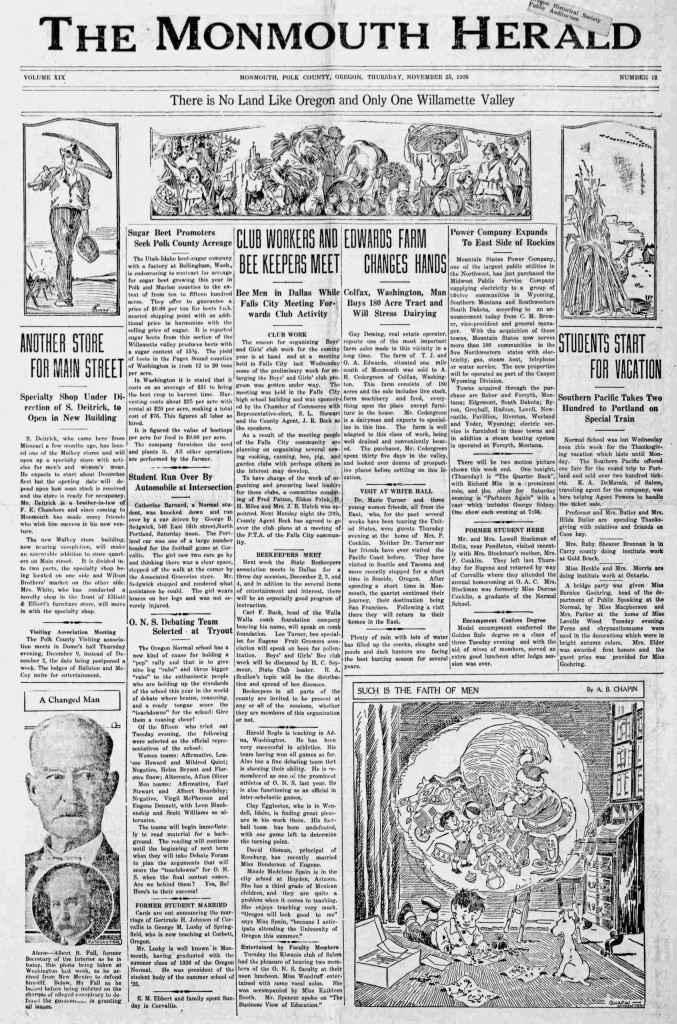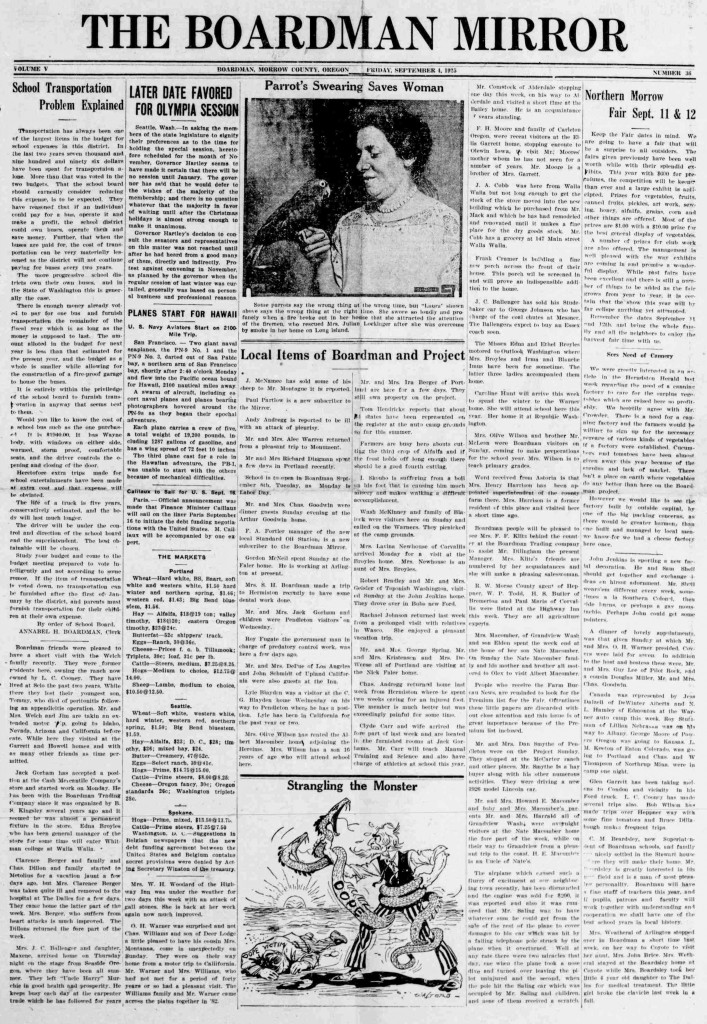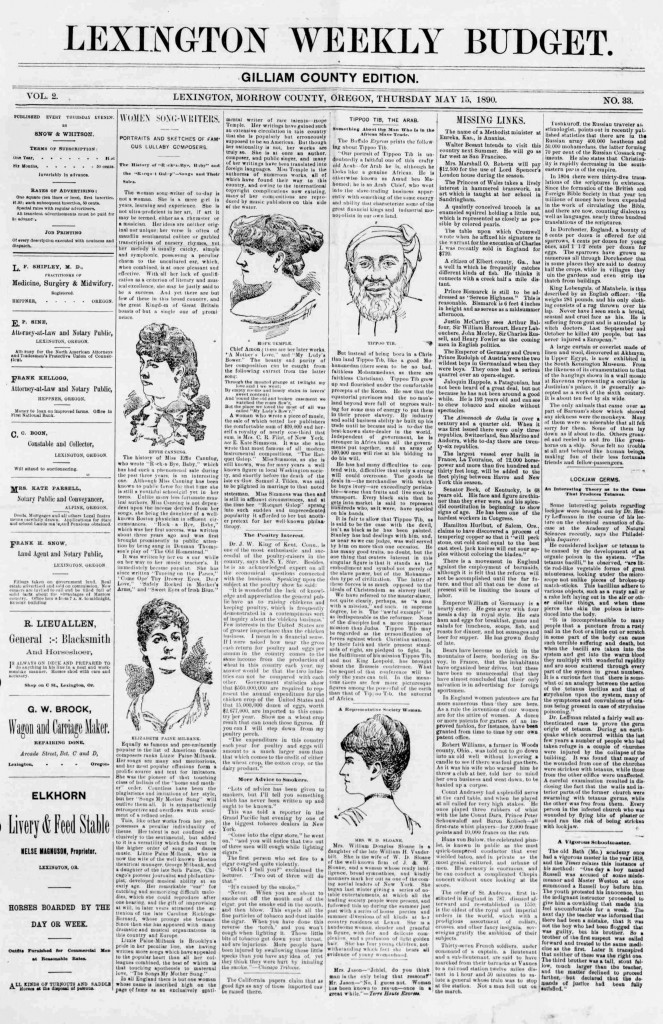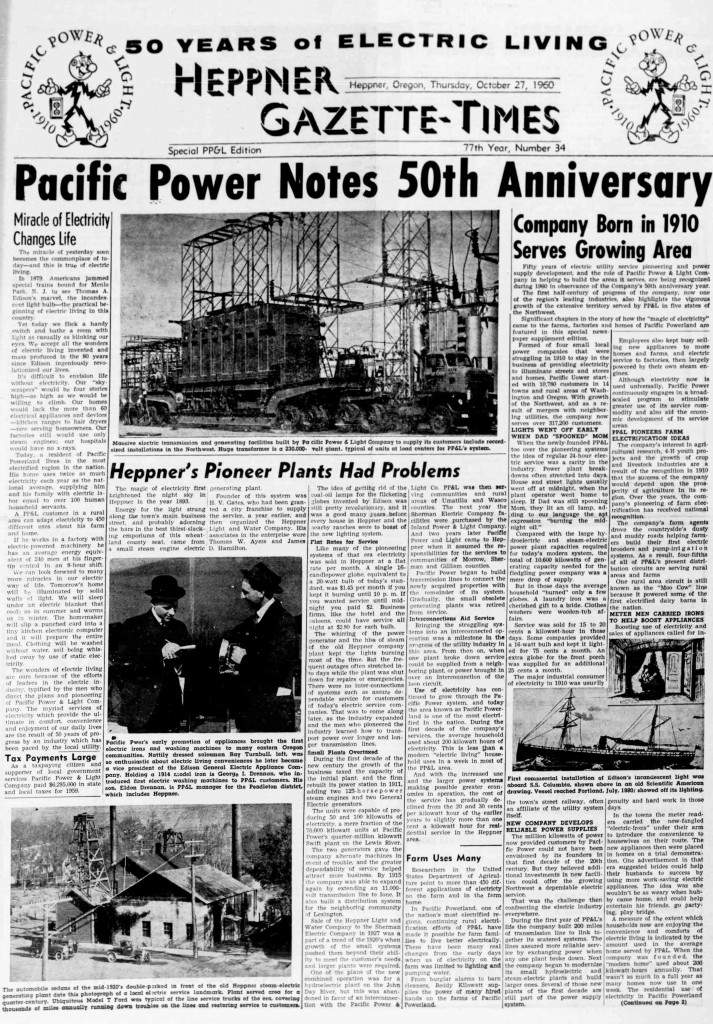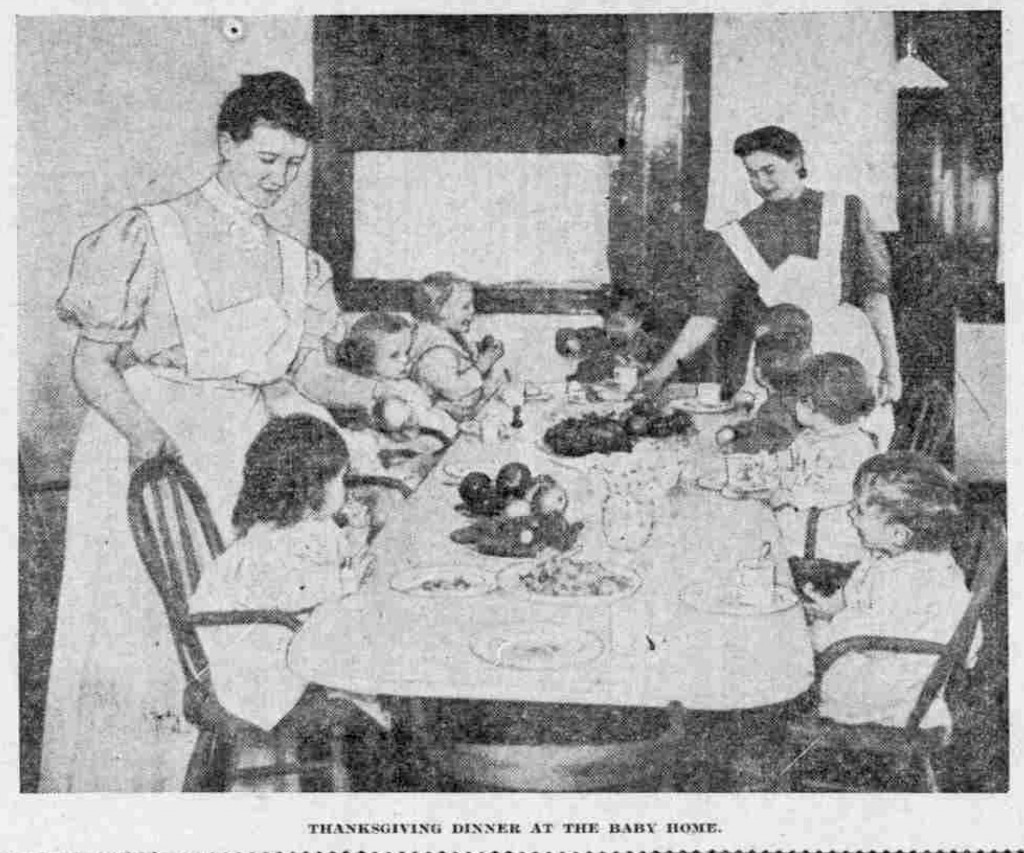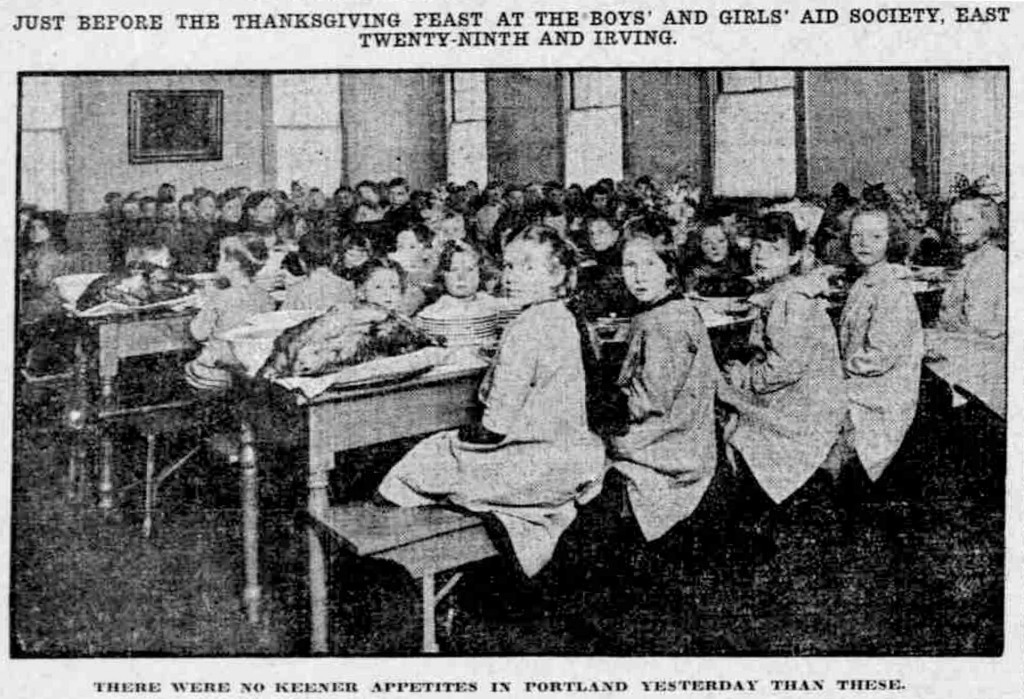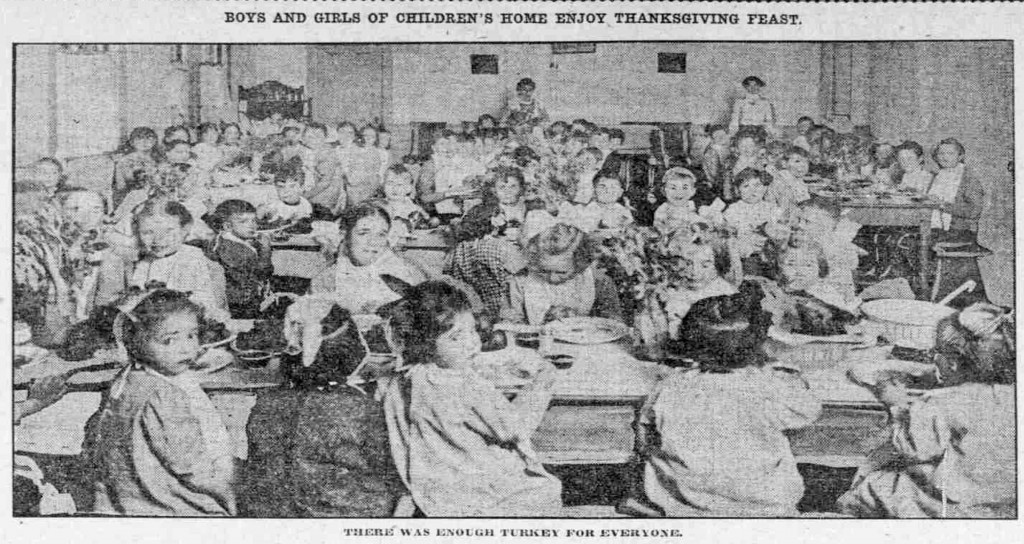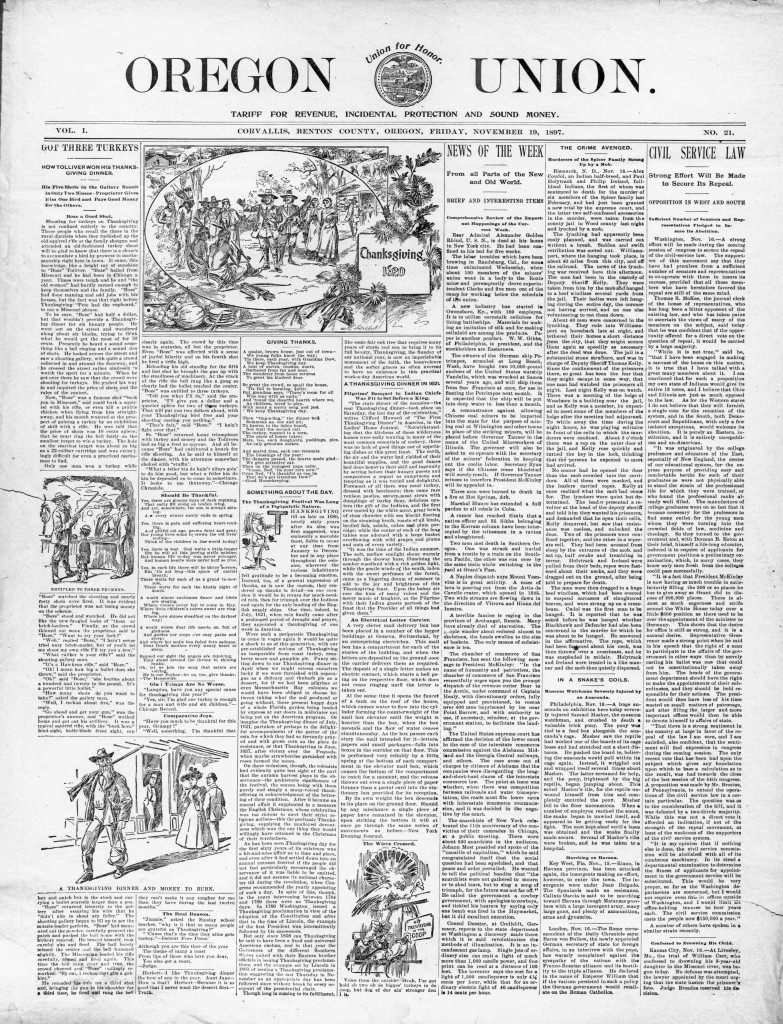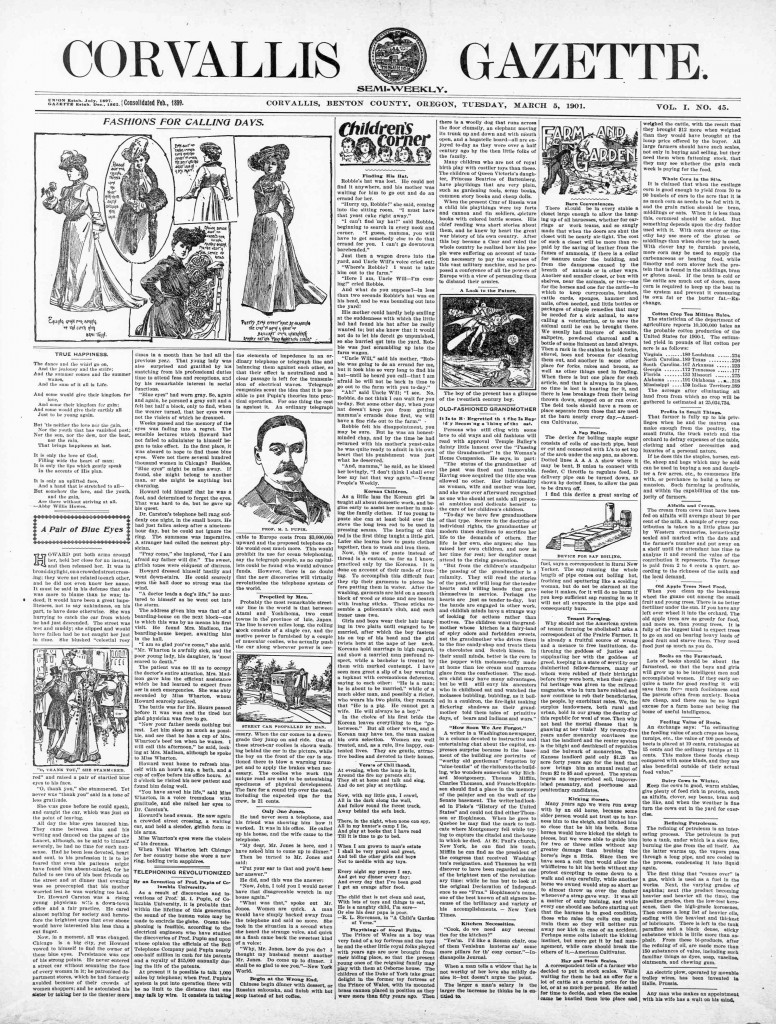“Tomorrow, Valentine, the patron saint of all lovers, especially amateurs, will receive proper recognition all over the civilized world.”
This is how The Dalles Daily Chronicle began its February 13, 1895, article “St. Valentine’s Day.” The newspaper served the people of The Dalles, Oregon, from 1890 to 1948.
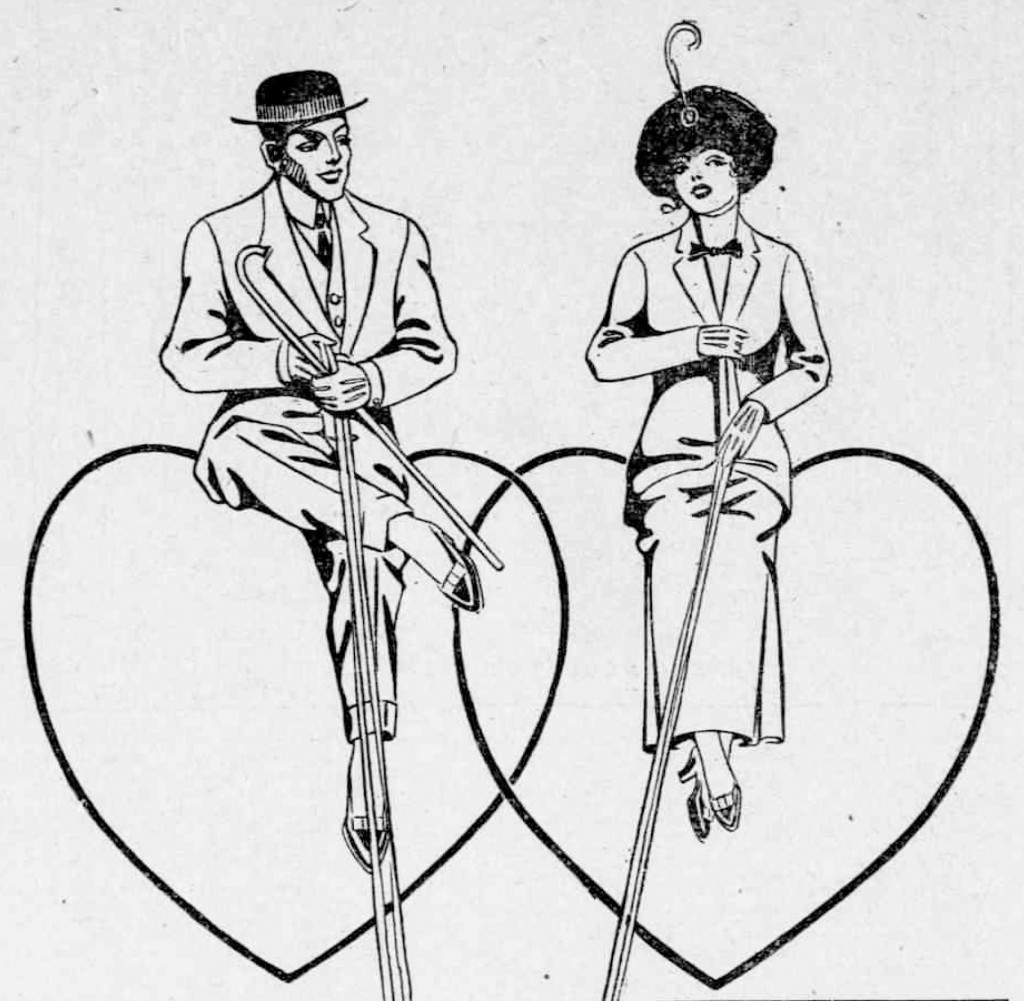
Sunday Oregonian. (Portland, Ore.) February 2, 1913, Image 21. http://oregonnews.uoregon.edu/lccn/sn83045782/1913-02-02/ed-1/seq-21/
After a cursory mention of how Valentine’s Day is celebrated (“The handsome souvenir, telling of love, will rest in the mailsacks alongside of the gaudily-colored caricature, telling of envy, malice, or spice”), The Dalles Daily Chronicle article lengthily delves into the history of the holiday:
“How the day came to be kept in the way it is, is more than anyone knows. St. Valentine himself is rather an uncertain personage, as it is hard to tell which Valentine the day is kept for. It is sometimes ascribed to Pope Valentine, who occupied the papal chair for thirty or forty days about the year 827, and of whom some one with A. P. A. proclivities, many years ago, remarked that ‘He was too good a man to make a good pope, and so he died within forty days of his assuming the office.’ St. Valentine’s day was not kept on his account however.”
The Dalles Daily Chronicle article goes on to further explore the seemingly hazy origins of Valentine’s Day, hypothesizing about its beginnings. Historic Oregon newspapers that were published around the turn of the century typically took the tack of reporting on the origins of Valentine’s Day when covering the holiday. For the Sunday Oregonian, the tone of this reportage is somber and somewhat chiding, noting the secularization of a holiday that had its roots in the church and was named after a religious figure. This sentiment is clearly evident in a February 11, 1906, article succinctly titled “Saint’s Day That Cupid Stole.”
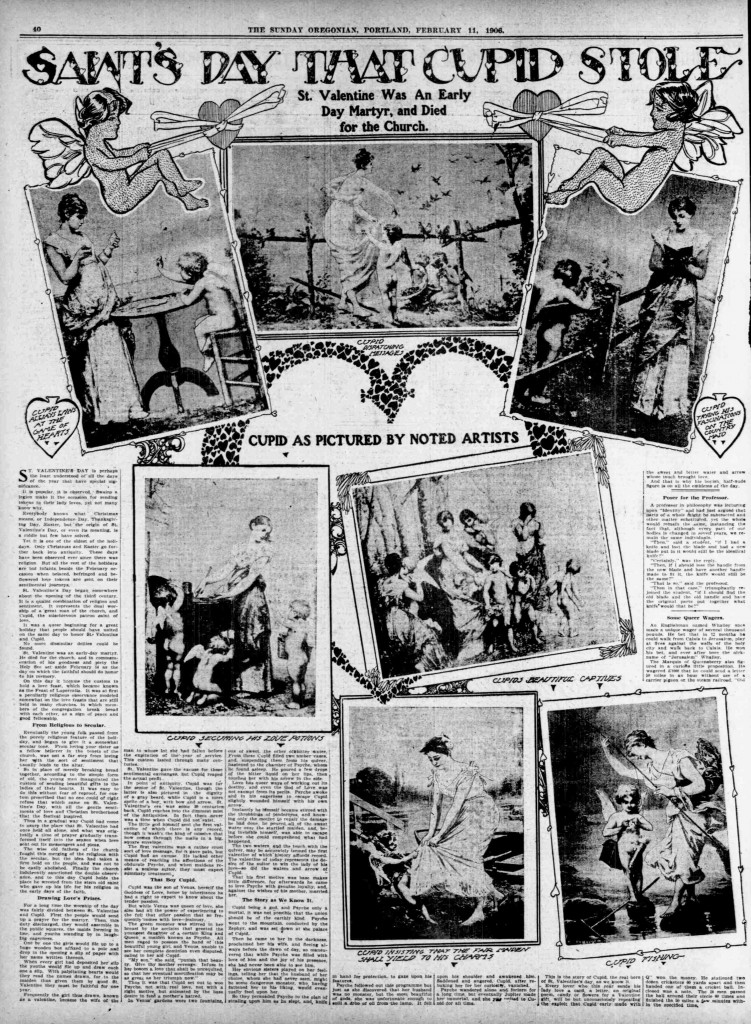
The Sunday Oregonian. (Portland, Ore.) February 11, 1906, Image 40. http://oregonnews.uoregon.edu/lccn/sn83045782/1906-02-11/ed-1/seq-40/
The Sunday Oregonian article notes that “St. Valentine’s Day began somewhere about the opening of the third century. It is a quaint combination of religion and sentiment. It represents the dual worship of a great man of the church, and Cupid, the mischievous patron saint of love.”
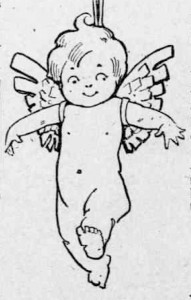
Sunday Oregonian. (Portland, Ore.) February 2, 1913, Image 21. http://oregonnews.uoregon.edu/lccn/sn83045782/1913-02-02/ed-1/seq-21/
The February 11, 1906, article in the Sunday Oregonian continues:
“It was a queer beginning for a great holiday that people should have united on the same day to honor St. Valentine and Cupid. No more dissimilar deities could be found… St. Valentine was an early day martyr. He died for the church, and in commemoration of his goodness and piety the Holy See set aside February 14 as the day on which the faithful should do honor to his memory… Eventually the young folk passed from the purely religious feature of the holiday, and began to give it a somewhat secular tone… Thus in a gradual way Cupid had come to usurp the place that St. Valentine had once held all alone, and what was originally a time of prayer gradually transformed itself into the season when love sent out its messengers and pleas.”
Three years later, the Sunday Oregonian, in its coverage of Valentine’s Day, took a different, lighter approach. The paper declared: “Should Have Been Cupid’s Day, Not St. Valentine’s.”
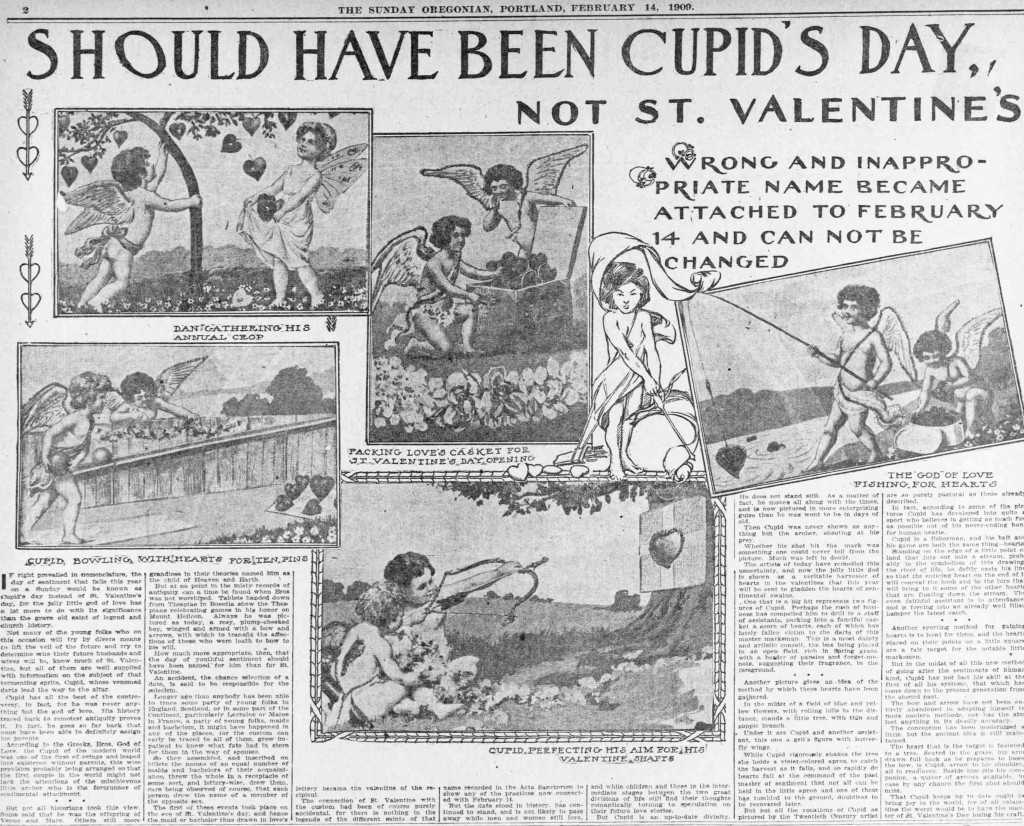
Sunday Oregonian. (Portland, Ore.) February 14, 1909, Image 52. http://oregonnews.uoregon.edu/lccn/sn83045782/1909-02-14/ed-1/seq-52
In this February 14, 1909, article, the Sunday Oregonian focuses less on the Christian origins of Valentine’s Day and more on Cupid and the tales of Greek mythology from which “the jolly little god of love” arose. The newspaper concedes that “Not many of the young folks who on this occasion will try by divers means to lift the veil of the future and try to determine who their future husbands and wives will be know much of St. Valentine, but all of them are well supplied with information on the subject of that tormenting sprite, Cupid, whose venomed darts lead the way to the altar.” The paper’s defeatist view on the subject is aptly reflected in the article’s subhead: “Wrong and Inappropriate Name Became Attached to February 14 and Can Not Be Changed.”
The Boardman Mirror, like The Dalles Daily Chronicle and the Sunday Oregonian, also ran in-depth articles that looked at the story behind Valentine’s Day. The newspaper was in print for just four years, from 1921 to 1925, and its readership were the citizens of Boardman, Oregon. Reflecting the Sunday Oregonian‘s later coverage of Valentine’s Day, the Boardman Mirror also chose to highlight the pagan history of the holiday. It did so in the February 6, 1925, article “Valentine’s Day of Pagan Origin.” However, unlike the Sunday Oregonian, the Boardman Mirror downplayed, if not outright dismissed, the role of St. Valentine and of Christianity in the formation of the holiday. The newspaper took its opposite stance even further, boldly stating it wasn’t Cupid who “had come to usurp the place that St. Valentine had once held all alone,” but it was Christianity that “‘took over’ the pagan festivals and adapted them to its own uses.”
In the February 6, 1925, article, the Boardman Mirror explains:
“In ancient Rome a sort of love lottery was annually held at the time of the festival called the Supercalia, because it was believed that at that season of the year birds chose their mates. It was a festival celebrated in February, in honor of Pan and Juno, and tablets bearing young women’s names were drawn out of a box by the young men. Each youth availing himself of this privilege was expected to be until the next Supercalia the faithful attendant of her whose name he had drawn.
“It was a pretty custom, and worth preserving. So Christianity, when it ‘took over’ the pagan festivals and adapted them to its own uses, kept the anniversary of the Supercalia as St. Valentine’s day, renaming it in honor of a holy martyr, who had been done to death at Rome in the Third century, A. D.
“There was no special reason why St. Valentine should be chosen in preference to any other saint. It does not appear that he took any particular interest in lovers and love-making. But, having first been clubbed to death and then beheaded, he deserved to be immortalized in some fashion, and in this way the object was obtained.”
It is enlightening, and even entertaining (depending on your disposition), to witness the different ways in which historic Oregon newspapers describe the origins of Valentine’s Day. Although their viewpoints were not always in alignment, these historic newspapers did faithfully print articles on the history of the holiday, year after year – at least around the turn of the century. Regardless of what readers of this blog believe about the holiday, it is hoped that Valentine’s Day will be a pleasant holiday for you all. As The Dalles Daily Chronicle says in its February 13, 1895, article, “We hope The Chronicle readers – especially the young perusers of our invaluable sheet – will all receive a quantum suf. of billing doves, pierced hearts, and the divers and sundry emblems that show how much and how anguishingly they are beloved.”


